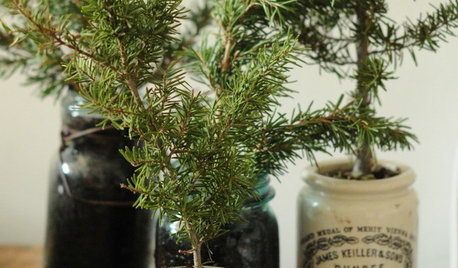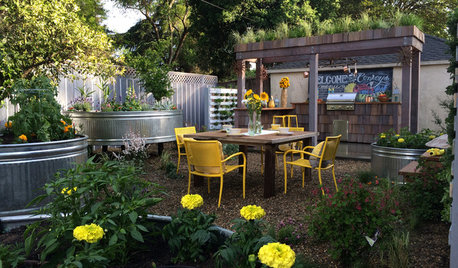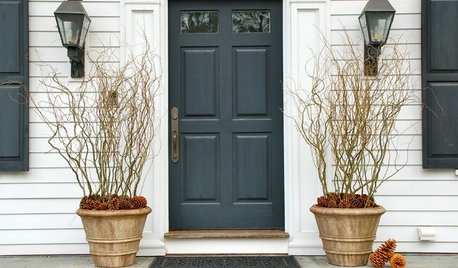Container Size for Mini-Dwarf Apple Trees?
vancouverwa
10 years ago
Related Stories

EDIBLE GARDENSHow to Add an Apple Tree to Your Edible Garden
Readily available, beautiful and fragrant, apple trees offer four-season interest along with crisp, juicy fruit
Full Story
GARDENING AND LANDSCAPINGCrazy for Fruit Trees
Whether a single citrus or a mini apple orchard, even the smallest landscape space can bear deliriously delicious fruit
Full Story
CHRISTMAS TREESLast-Minute Christmas: Mini Tree in a Pot
Create a temporary tree with cuttings or buy a small live tree to love for years
Full Story
EDIBLE GARDENSHow to Grow 10 Favorite Fruit Trees at Home
Plant a mini orchard in fall, winter or early spring to enjoy fresh-off-the-tree fruit the following year
Full Story
GARDENING GUIDESHow to Keep Your Citrus Trees Well Fed and Healthy
Ripe for some citrus fertilizer know-how? This mini guide will help your lemon, orange and grapefruit trees flourish
Full Story
FARM YOUR YARDRemake Your Backyard Into a Mini Farm
You can get a taste of country life by line-drying your laundry, growing some produce or going whole hog with the critters
Full Story
PLANTING IDEASStretch the Budget, Seasons and Style: Add Conifers to Your Containers
Small, low-maintenance conifers are a boon for mixed containers — and you can transplant them to your garden when they’ve outgrown the pot
Full Story
WINTER GARDENINGBranches Bring the Winter Spirit to Container Gardens
Add dimension and drama to winter pots with branches from austere to downright colorful
Full Story
FALL GARDENING5 Fall Fruits You Can Grow in Containers
Brighten your porch or patio with a potted pomegranate, kumquat, blueberry bush or another great fall fruit
Full Story
FARM YOUR YARDHow to Grow Vegetables in Containers
Get glorious vegetables and fruits on your patio with a pro’s guidance — including his personal recipe for potting mix
Full Story








drew51 SE MI Z5b/6a
Ernie
Related Professionals
Lowell Landscape Architects & Landscape Designers · Centereach Landscape Contractors · Milford Mill Landscape Contractors · Nashua Landscape Contractors · North Plainfield Landscape Contractors · Forest Hill Landscape Contractors · Hawaiian Gardens Landscape Contractors · Fort Lee Solar Energy Systems · Greenwich Solar Energy Systems · Rosamond Solar Energy Systems · Richmond Window Contractors · Carol City Window Contractors · Northridge Window Contractors · Charleston Fence Contractors · Huntington Beach Fence ContractorsvancouverwaOriginal Author
Ernie
OregonEd
tapla (mid-Michigan, USDA z5b-6a)
joeschmoe80
Ernie
Todd RipCity
tapla (mid-Michigan, USDA z5b-6a)